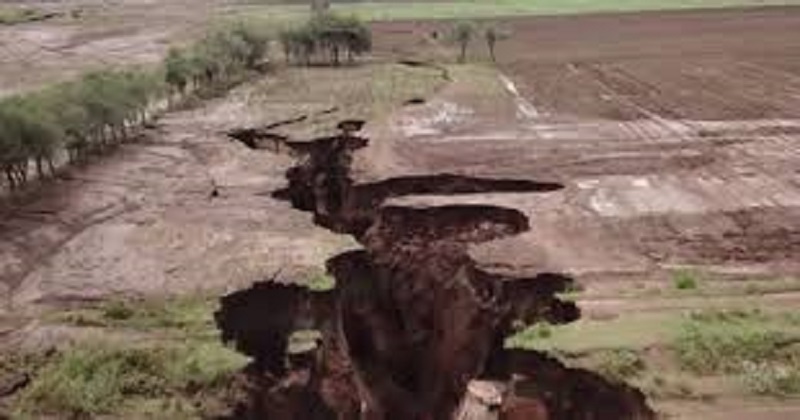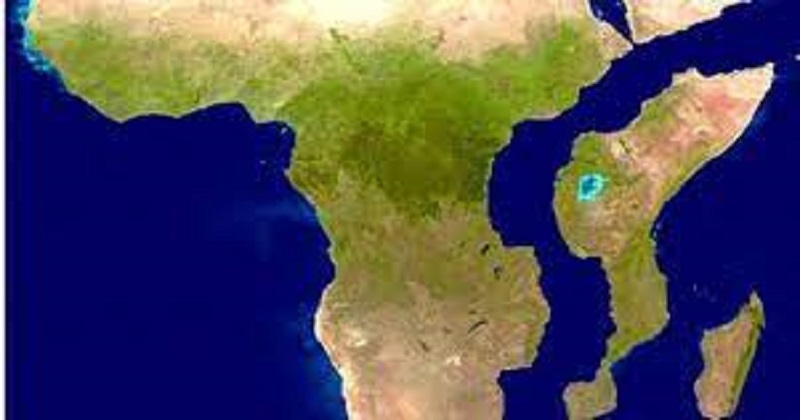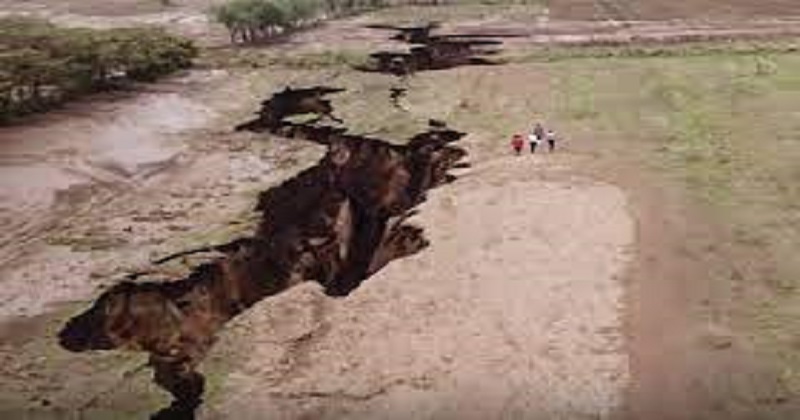
Scientists and residents of Kenya have been intrigued by a natural phenomenon. In the aftermath of torrential rain and earth tremors, a 15-meter-wide crack several kilometers long has opened up on the Earth’s surface. Scholars claim that the incident marks the beginning of the division of Africa into two separate continents. Can this be proven? Discover more about this horrific natural event.
Origin
After heavy rains in the Great Rift Valley region of Kenya, a huge crack appeared on March 18, 2018.
How big is the crack?
The crack, which was hidden from view until recently because of volcanic ash, is part of the Great Rift Valley.

Great Rift Valley
According to National Geographic, this is a low-lying region where tectonic plates split or move apart.
Nature’s phenomenon
A local newspaper, the Daily Nation, reports that the huge fissure is the result of strong movement deep inside the Earth, leaving deep cracks in Narok county, Kenya.
Massive damage
On the busy Mai Mahiu-Narok road, signs of damage were visible. According to the Kenyan newspaper, the Daily Nation, the crack measures 15 meters deep and more than 20 meters wide at one point.
Victims
Families living near the crack are starting to move, according to the same publication. In the opinion of Mary Wambui, a 72-year-old local resident, living there is like playing Russian roulette.
Panic
Wambui was having dinner with her family on the day that the ground suddenly started to split under her feet, dividing her house in two.

Anxiety spreads
Cracks appeared on the city’s main road after weeks of heavy rain, flooding, and tremors in the ground, according to Reuters. In the town of Mai Mahiu, Eliud Njoroge Mbugua reported that when his wife noticed cracks in their house, she began to shout for neighbors to help carry their belongings. During the following days, the house became so unstable that it had to be demolished.
History
According to David Adede, a geologist with the Daily Nation, the fissure was previously filled with volcanic ash from Mount Longonot, but that was washed away by heavy rains, leaving the cracks exposed. Experts said that the Great Rift Valley has a history of tectonic and volcanic activity. In recent times, the crack may have been tectonically inactive, but the movement deep below the surface of the planet has transformed this area into a ‘zone of weakness’ that extends up to the surface.
Zones of weakness?
Zones of weakness are fault lines and fissures filled with volcanic ash. The ash probably came from nearby Mount Longonot, said the researcher to the Daily Nation. The theory of plate tectonics holds that the earth’s crust is divided into different plates that move on top of the mantle, the hot inner layer of rock that surrounds the planet’s core. The local media reported that the crack in the main road had already been filled in with a mixture of stones and concrete so that it would function again as before.
An interim solution
Due to the inevitability of the problems deep in the Earth’s crust at the Suswa volcano, which is also located in the Great Rift Valley, the Kenya National Highways Authority’s repairs will only offer a temporary fix. Repair works by the Kenya National Highways Authority will only offer a temporary solution to the problems at the Suswa volcano, also in the Great Rift Valley.
Forecasts
A researcher from the University of London, Lucia Perez Diaz, said in an article on the site Conversation that the crack would eventually separate Africa into two continents over the next millions of years. Approximately 3,000 kilometers lie between the Gulf of Aden, near Somalia, and Zimbabwe in the Great Rift Valley in East Africa, according to the scholar. The specialist believes that the northern region may be the first to split due to its volcanic rock cover.
Read more: Man who had a huge appetite banned from all-you-can-eat restaurant in China
According to Diaz, the fissure in Kenya’s southeast will separate the African plate in two, with the Nubia plate to the west and the Somali plate to the east. The lithosphere is also stretched as it is subjected to horizontal forces, becoming thinner and thinner until it ruptures, causing a fissure. During this process, other natural phenomena occur, such as volcanic eruptions and earthquakes. Lucia Perez Diaz believes that fissures and cracks are the first stages of a continental split, which, if it occurs fully, will create a new ocean.

Post Your Comments